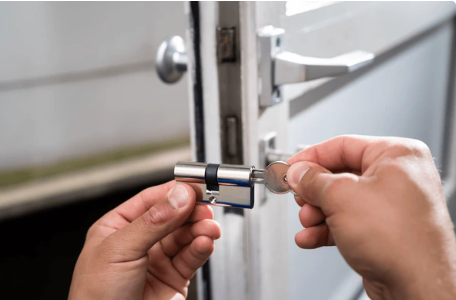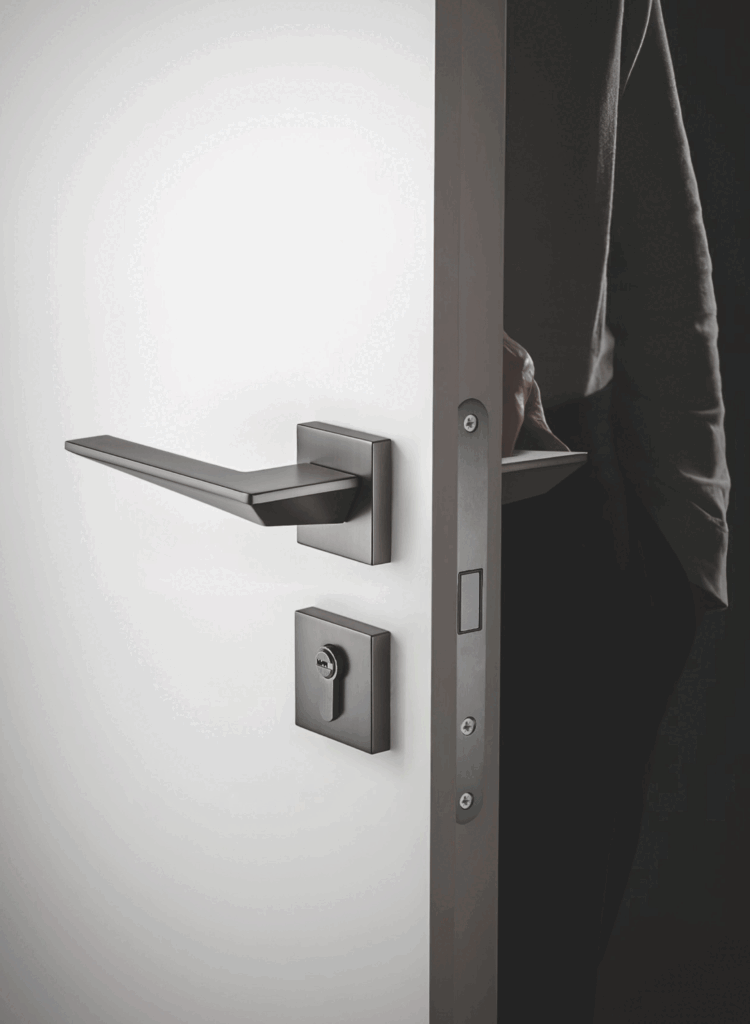In the door hardware industry, ensuring the security, durability, and reliability of products is paramount. Whether you are working with mechanical locks, door handles, or other security products, meeting recognized standards is critical to delivering quality and trust. One of the most important standards for lock cylinders is BS EN 1303.
This European standard ensures that lock cylinders meet rigorous performance and security criteria, making it easier for manufacturers, distributors, and end-users to select the best products for their needs. In this article, we will explore what BS EN 1303 is, how it works, and why it matters to the door hardware industry.

What is BS EN 1303?
BS EN 1303 is a European standard that specifically focuses on the testing and classification of lock cylinders. It is issued by the European Committee for Standardization (CEN), a non-profit organization that develops and publishes European standards. CEN plays a key role in ensuring product quality, safety, and interoperability across Europe. You can explore more about CEN and its standards on their official website.
The BS EN 1303 standard aims to ensure that lock cylinders perform reliably in various environments and that they meet the necessary security and durability criteria. It provides manufacturers with a framework to ensure their products are safe and secure, while also helping buyers make informed decisions when purchasing lock cylinders.
Decoding the 8-Digit BS EN 1303 Code
The BS EN 1303 standard uses an 8-digit classification code to categorize lock cylinders. Each digit represents a specific aspect of the cylinder’s performance, such as its intended use, durability, and resistance to environmental factors. Here’s a breakdown of what each digit represents:
Digit 1: Category of Use
The first digit in the code represents the category of use. This category defines the expected level of care required for the product and its likelihood of misuse. For example, Grade 1 is for lock cylinders intended for use by people with a high incentive to exercise care and a small chance of misuse. This grade is typically suitable for residential or office settings where the lock is handled by responsible users.
Digit 2: Durability
The second digit refers to the durability of the lock cylinder, which is based on how many cycles the cylinder can endure before it begins to show wear. The durability grades are:
| Grade 4 | Grade 5 | Grade 6 |
|---|---|---|
| 25,000 test cycles | 50,000 test cycles | 100,000 test cycles |
This classification helps determine the suitability of a cylinder for different environments. For instance, a Grade 6 cylinder, tested for 100,000 cycles, is ideal for high-traffic areas, such as commercial buildings or hotels, where doors are used frequently.
Digit 3: Door Mass
The third digit represents the door mass that the lock cylinder is suitable for. This indicates the weight of the door the cylinder is designed to support. A heavy-duty cylinder will be required for large, heavy doors, such as those used in commercial buildings or fire-rated doors.
Only one grade of door mass is identified as follows:
- grade 0: no door mass requirement.
Digit 4: Suitability for Fire-Resistant/Smoke-Control Doors
The fourth digit classifies whether the lock cylinder is suitable for use on fire-resistant or smoke-control doors. This is essential for ensuring the safety of the building and its occupants, particularly in commercial or industrial settings where such doors are required by law.
Three grades of suitability for use on fire resistant/smoke controlled doors are identified:
- grade 0:not approved for use on fire resistant /smoke control door assemblies;
- grade A:suitable for use on smoke control door assemblies;
- grade B:suitable for use on fire resistant and smoke control doors.
Digit 5: Safety
The fifth digit relates to the safety of the lock cylinder. This category addresses potential risks such as accidental opening or bypassing the lock. The more secure the cylinder, the higher its rating in this category. Ensuring safety is essential for environments where unauthorized access must be prevented.
Only one grade of safety is identified:
- grade 0: no safety requirement.
Digit 6: Corrosion Resistance and Temperature
The sixth digit refers to the corrosion resistance and temperature tolerance of the lock cylinder. This is important for doors exposed to harsh environmental conditions, such as those in coastal areas, or environments with high humidity, like bathrooms or kitchens. Lock cylinders with high corrosion resistance maintain their appearance and function over time, even when exposed to the elements.
Four grades of corrosion resistance and temperature requirement are identified:
- grade 0:no corrosion requirement; no temperature requirement
- grade A:high corrosion resistance;no temperature requirement;
- grade B:no corrosion requirement; temperature requirement: from-25℃ to +65℃;
- grade C:high corrosion resistance; temperature requirement: from-25℃ to +65℃ .
Digit 7: Key-Related Security
The seventh digit represents key-related security. This category ensures that the lock cylinder is resistant to picking, duplication, and other forms of unauthorized access. The higher the grade, the more secure the key system is.
Six grades of key-related security are identified :
- grade 1: 100 Min.number of effective differs /2 Min.number of movable detainers;
- grade 2: 300 Min.number of effective differs/3 Min.number of movable detainers;
- grade 3: 15000 Min.number of effective differs/5 Min.number of movable detainers;
- grade 4: 30000 Min.number of effective differs/5 Min.number of movable detainers;
- grade 5: 30000 Min.number of effective differs/6 Min.number of movable detainers;
- grade 6: 100000 Min.number of effective differs/6 Min.number of movable detainers.
Digit 8: Attack Resistance
Finally, the eighth digit refers to the attack resistance of the lock cylinder. This classifies how resistant the cylinder is to tampering or forced entry. High-security applications, such as government buildings or banks, require lock cylinders with the highest attack resistance to prevent unauthorized access.
Five grades of resistance against drilling and mechanical attack are identified:
- grade 0: no resistance against drilling; no resistance against mechanical attack;
- grade A: 3-5 min resistance against drilling; resistance against mechanical attack except plug/cylinder extraction;
- grade B: 5-10 min resistance against drilling; resistance against mechanical attack except plug/cylinder extraction;
- grade C: 3-5 min resistance against drilling; resistance against mechanical attack;
- grade D: 5-10 min resistance against drilling; resistance against mechanical attack.
Why Adhering to BS EN 1303 Matters
Adhering to the BS EN 1303 standard is crucial for ensuring the quality, durability, and safety of lock cylinders. For large-scale buyers in the door hardware market, such as door manufacturers, regional hardware brands, and importers, this standard helps guide product selection and ensures that the products meet European safety and security standards.
By choosing products that meet BS EN 1303 specifications, you can assure your customers that they are receiving top-quality, tested, and reliable products. This also reduces the risk of product failures, increases customer satisfaction, and helps maintain compliance with industry regulations, especially in high-risk environments.
Difference Between BS EN 1303 and TS007 Standards
When evaluating lock cylinders, both BS EN 1303 and TS007 are important standards that ensure quality and security. While they are often mentioned together, they serve different purposes and focus on distinct aspects of cylinder performance. Below is a comparison to help clarify the differences:
1. Purpose and Focus
- BS EN 1303:
This is a performance-based standard that evaluates the durability, safety, corrosion resistance, and security of lock cylinders. It is more comprehensive in assessing various environmental and operational factors, such as cycles of use and attack resistance. - TS007:
This is a security-focused standard, specifically developed in the UK, aimed at preventing forced entry and common attacks such as lock snapping, bumping, picking, and drilling. It provides a 3-star rating system to classify cylinder security levels.
2. Scope
- BS EN 1303:
Covers a wide range of performance criteria, including:- Durability (number of test cycles)
- Fire resistance and smoke control
- Corrosion resistance
- Key-related security
- Attack resistance It is a holistic standard, ensuring the lock cylinder performs well in various conditions, including long-term use and exposure to environmental elements.
- TS007:
Primarily focuses on resistance to physical attacks. It includes enhanced protection against modern burglary techniques such as cylinder snapping. It is commonly used in residential and commercial properties in the UK.
3. Classification System
- BS EN 1303:
Uses an 8-digit classification code to provide detailed information about the lock’s performance in different categories. Each digit represents a specific feature, such as category of use, durability, and security level. - TS007:
Features a star rating system, where:- 1 Star: Basic level of security (requires additional protection, e.g., a security handle).
- 2 Stars: Enhanced security when paired with a 1-star cylinder.
- 3 Stars: Maximum standalone security, protecting against all known forms of attack.
4. Market Relevance
- BS EN 1303:
Applies across Europe, ensuring lock cylinders meet the required performance for diverse environments, including residential, commercial, and industrial applications. It is a widely recognized benchmark for product quality and performance. - TS007:
Is specific to the UK and often used in compliance with British insurance standards. It is particularly relevant in areas where lock snapping is a common method of burglary.
5. Issuing Bodies
One of the key differences between BS EN 1303 and TS007 lies in the organizations responsible for their development and publication:
- BS EN 1303:
This standard is issued by the European Committee for Standardization (CEN). CEN is a major organization responsible for developing European standards across various industries, including building hardware. You can learn more about CEN on their official website. - TS007:
This standard is developed by the Door & Hardware Federation (DHF) and the British Standards Institution (BSI) in collaboration with Secured by Design, a police initiative in the UK. The focus of TS007 is to address specific security threats prevalent in the UK. For more information, visit the DHF website and the BSI website. These issuing organizations reflect the geographical and functional scope of each standard. BS EN 1303 is pan-European, ensuring uniform quality across the EU, while TS007 is tailored to the UK market’s unique security needs.
6. Compatibility
The standards are complementary rather than mutually exclusive.
- BS EN 1303 evaluates broad performance, ensuring the cylinder is reliable and durable.
- TS007 adds an extra layer of security focus, addressing specific attack methods.
For maximum security, a lock cylinder can meet BS EN 1303 performance criteria while also achieving a TS007 3-star rating, offering comprehensive protection and reliability.
While BS EN 1303 provides a holistic view of lock cylinder performance, TS007 focuses on preventing specific forms of physical attack. Buyers should consider both standards when selecting lock cylinders, particularly for high-security environments or regions with specific burglary risks.
For more details on TS007 3-Star Euro Cylinders, check this resource link.
Conclusion: Ensure Quality and Security with BS EN 1303
The BS EN 1303 standard is an essential tool for ensuring the performance, durability, and security of lock cylinders. By understanding the classification code and the criteria behind each digit, buyers can make informed decisions about the products they purchase.
For manufacturers, distributors, and procurement professionals, choosing lock cylinders that meet the BS EN 1303 standard ensures that your customers will receive the best in security and performance. Whether you’re dealing with mechanical locks, door handles, or other door hardware products, adhering to these standards guarantees that you’re offering high-quality, reliable products that will stand the test of time.
Share This Story, Choose Your Platform!

